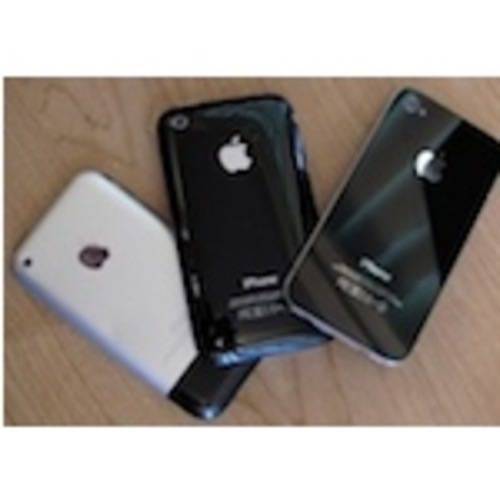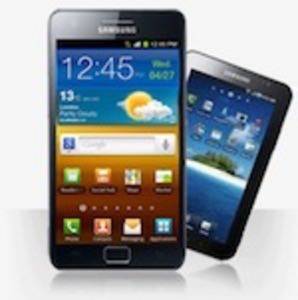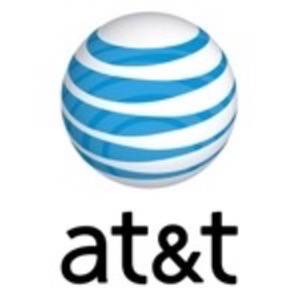If there were any uncertainty that Google’s acquisition of Motorola would be approved by regulatory agencies across the world, one only has to look at the fourth quarter of 2011 to see why it never was in danger. The last quarter of 2011 showed us which companies really control the smartphone market and Motorola was certainly not one of them. Between Apple and Samsung, the two behemoths controlled 95% of mobile phone profits worldwide, according to Canaccord Genuity analyst Michael Walkley.

The pincer formation at the top of the ecosystem means that no regulatory agency can deny Google its $12.5 billion purchase. Life has also become extremely difficult for all the other OEMs and mobile platforms trying to make a dent in the market. If you are not making an iDevice or some type of Galaxy product, Apple and Samsung are squeezing you out of the market. The clock is ticking.

By the Numbers
According to Walkley, HTC had 3% of the device industry’s total fourth quarter profits, Nokia and Research In Motion each had 2% while Motorola and LG both broke even. Apple had 80% while Samsung had 15%.
Do not expect Apple to maintain 80% of profits in the mobile ecosystem on a quarter-by-quarter basis. The blowout by Apple may never be seen again (or, perhaps one quarter a year when a new iPhone is released). The third quarter of 2011 may be more indicative of Apple’s place in the ecosystem at 56% of profits. That is dominant but not quite as mind numbing.
Samsung takes up about 40% of the Android ecosystem. HTC is a solid second and Motorola third with LG and Sony Ericsson bringing up the long tail. Samsung also sells Windows Phones (with HTC and Nokia) and its own Bada system (which competes with Nokia’s S Series across the world).
The world needs a strong No. 3 in the mobile ecosystem. Ostensibly, that is Nokia with its dominance in emerging markets. Profits do not necessarily come from emerging markets though and Nokia’s push to reclaim territory in North America goes to show how important the high-end smartphone market is to the OEMs. Apple has 8.1% of the global mobile market but its profits are 10-times that number.
The statements made by European Commission VP Joaquin Almunia in regards to the Motorola acquisition by Google are very telling of the state of the mobile ecosystem: “We have approved the acquisition of Motorola Mobility by Google because, upon careful examination, this transaction does not itself raise competition issues. Of course, the Commission will continue to keep a close eye on the behaviour of all market players in the sector, particularly the increasingly strategic use of patents.”
Key phrase: “this transaction does not itself raise competition issues.” Well, of course it does not. Motorola would have to have major market share to be considered a competitor to the likes of Samsung and Apple. For the past several years, that has just not been the case. Any notion that Google would favor Motorola over other Android ecosystem players has become laughable.

If Google favors anybody at this point, it is its largest partner in crime, Samsung. The Korean cellphone maker is Google’s biggest hedge against the absolute domination by Apple and the best Android evangelist on the planet. It is no mistake that Samsung has been awarded the last two Nexus devices, Android’s flagship handset.
The Carriers’ Conundrum
Mobility is exploding. We hear about it every day from a variety of industry segments. Advertising, analytics, publishers, frameworks and tools makers, cloud services, “as a service” providers, social networking, payments, games and gamification, e-commerce, deals, offers, retail, local news (retail, advertising etc.), transportation, healthcare … to name a few. Yet, the companies that provide the mobile infrastructure are actually shrinking. Android and iOS are locking just about everybody out. The figureheads behind those platforms – Samsung and Apple – are vacuuming all the profit (and much of the incentive) out of the industry.
In its last quarterly earnings call, AT&T promised that it would have to institute harsh data rate penalties because of its so-called spectrum paucity. Users with grandfathered “unlimited” plans are now seeing their data speeds throttled after about 2.3 GB of usage (depending on the “top 5%” in a given area). AT&T sells a 3GB plan for $30, the same as the unlimited plan. Verizon has also instituted similar data throttling. The carriers have to squeeze more average revenue per user out of the ecosystem because their profits are being cut into by the OEMs that force them to subsidize devices like the iPhone and Galaxy. Since Apple and Samsung drive sales, the companies can dictate terms to the carriers and the end result usually is not good for consumers.

One of the reasons that the carriers are so interested in developing their own personal clouds, apps stores, enterprise solutions, payment processors, content delivery and other variety of value-added services is because they fear being turned into dumb pipes for the ecosystem created by the OEMs and software developers. Users often balk against this kind of pre-loaded carrier “bloatware” but it is an action to affect control of an ecosystem that it otherwise has little control over.
For OEMs, Time Is Running Out
Other OEMs are feeling the pain of Apple and Samsung’s dominance. Research In Motion (while mostly responsible for its own fate) has fallen off the grid with BlackBerry. Hewlett-Packard’s webOS was open sourced after HP bungled its first series of devices and cut the cord on the project. Nokia’s MeeGo was doomed when it thought it would rely on x86 chips from Intel and Symbian is nearing its own end of life. These are all examples of companies making mistakes and getting buried by the top performers.

Microsoft made the strategic decision to dump its aging Windows Mobile CE line and rebuild with Windows Phone. It was a necessary but ill-timed switch coming in the middle of Apple and Android’s explosion. Samsung, HTC and Nokia are on board to create Windows Phone devices either as a hedge to Android reliance or through some type of deal with Microsoft. Windows Phone is not just some side project for Microsoft and it has committed billions of dollars to the project. While Microsoft does feel the squeeze coming from Apple and Samsung’s Android division, it has the money to ride out see its plan to fruition. It is the perfect counter-example to the rest of the mobile ecosystem that does not have the money to survive in an environment where two giant companies eat all of the profits.
That is why time is running out for many of these companies (RIM is especially put on notice). There is only so long a company can float along without making serious profits in the mobile ecosystem. Motorola and Google will have some time if the two stick together and Google will be fine by itself as the purveyor of Android to the masses. Yet, if Google spins off the Motorola handset division, the OEM likely will not last more than a couple of years against Apple and Samsung at the rate the two companies are gobbling up available customers and cash.

When it comes down to it, the European Commission and U.S. Department of Justice could find no real reason to turn down the MotoGoo merger. All of the major players are now well stocked with patents (which is a separate but important story here) and the economics of competition show that MotoGoo can only make a nominal dent, if Google retains the handset division.
While many consumers and pundits may praise Apple and Samsung for building strong business practices and dominating market share in mobile, the top-heavy structure of the market will not be good for the long term viability of many other players in the ecosystem.
Top image courtesy Shutterstock









